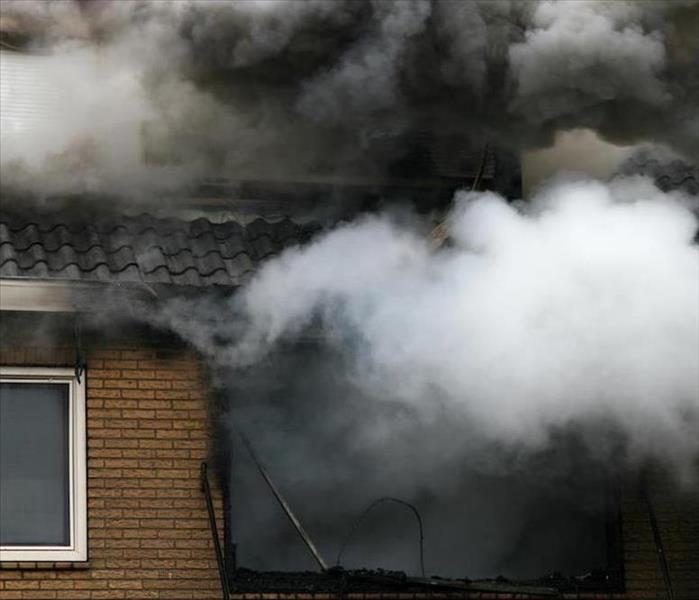How To Become Better At Fire Damage Remediation In The Bronx
9/29/2019 (Permalink)
 Fire often includes smoke and charred residue. Contact SERVPRO after the fire fighters leave for effective remediatation services.
Fire often includes smoke and charred residue. Contact SERVPRO after the fire fighters leave for effective remediatation services.
Caution and Special Equipment Needed During Fire Damage Residue Clean-Up in the South Bronx
One of the ways that South Bronx fire residues differ from ordinary soiling is impossible to understand without looking through a microscope. The visible portion of smoke and the staining seen from soot is made up of tiny bits of incompletely combusted building materials. These minute particles frequently smear and spread if a simple wipe away approach is used, although that technique is often successful with other kinds of dirt.
Soot Is Abrasive, Acidic, and Toxic
The residues left after fire damage in your South Bronx also contain rough, sharp-edged particles. Merely scrubbing them away results in scratching of smooth surfaces because of the fine, gritty materials. Many surfaces coated in soot residues experience tarnishing or corrosion, a chemical change linked to the highly acidic nature of soot. Soot also contains hazardous substances created during combustion, including known carcinogens. Cleanup without personal protective equipment (PPE) exposes workers to potential injury or illness.
Air Quality Suffers Because of Fire Residues
Much of the soot in smoke settles on surfaces, but a percentage remains airborne. While performing fire damage cleanup, additional soot particles are stirred up and join the bits floating. These particles contribute to long-lasting odors issues and impair healthy air quality. To address this challenge, SERVPRO recommends the use of negative pressure air scrubbing equipment in fire damage mitigation and remediation projects. The air scrubbing set up includes plastic barriers to isolate the work area, sealed by the suction action of the equipment. Contaminated air moves through HEPA filters, with significant capture of the small, abrasive particles. The filtered air vents to the outside to prevent further residue deposit.
Research Points Our Technicians to Effective Cleaning Protocols
The hot, high oxygen fire fueled by paper or dry wood leaves a loose, ashy residue. Dry brushing or sponging removes staining from ceilings and walls, and HEPA-filtered vacuums are well-suited to collect and contain that ashy for disposal. Rubber, plastic, and padding or fabrics release sticky, dark soot full of abrasives. SERVPRO uses cleaning products containing wetting agents and surfactants to lift the residues from the surface, suspending the debris to limit its abrasive effect as it is sponged or toweled off the structures.
Protein-Based Residues Require Special Handling
Kitchen fires produce a residue that is an evaporative substance rather than soot--similar to the coatings on frequently used pots and pans. Industry best practices employed by SERVPRO include the careful application of abrasives often accompanied by solvents to dislodge this highly adhesive coating.
The Institute of Inspection, Cleaning and Restoration Certification (IICRC) training mastered by our SERVPRO of South Bronx employees help us match products, tools, and methods to clear away fire residues appropriately and efficiently. Call (347) 590-9902 to schedule an assessment and planning to resolve challenging fire damage issues.
Click here to learn more about the Bronx.






 24/7 Emergency Service
24/7 Emergency Service